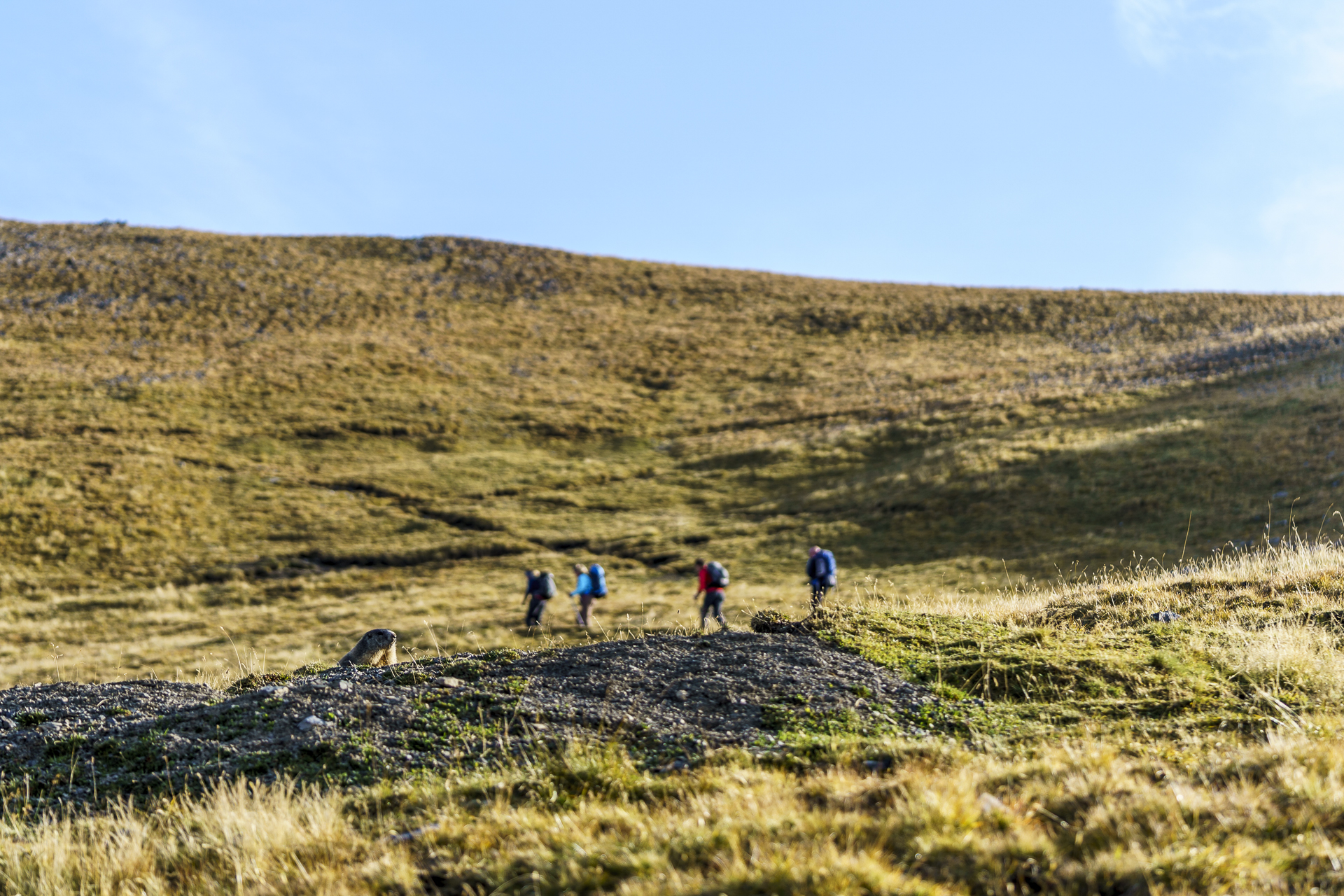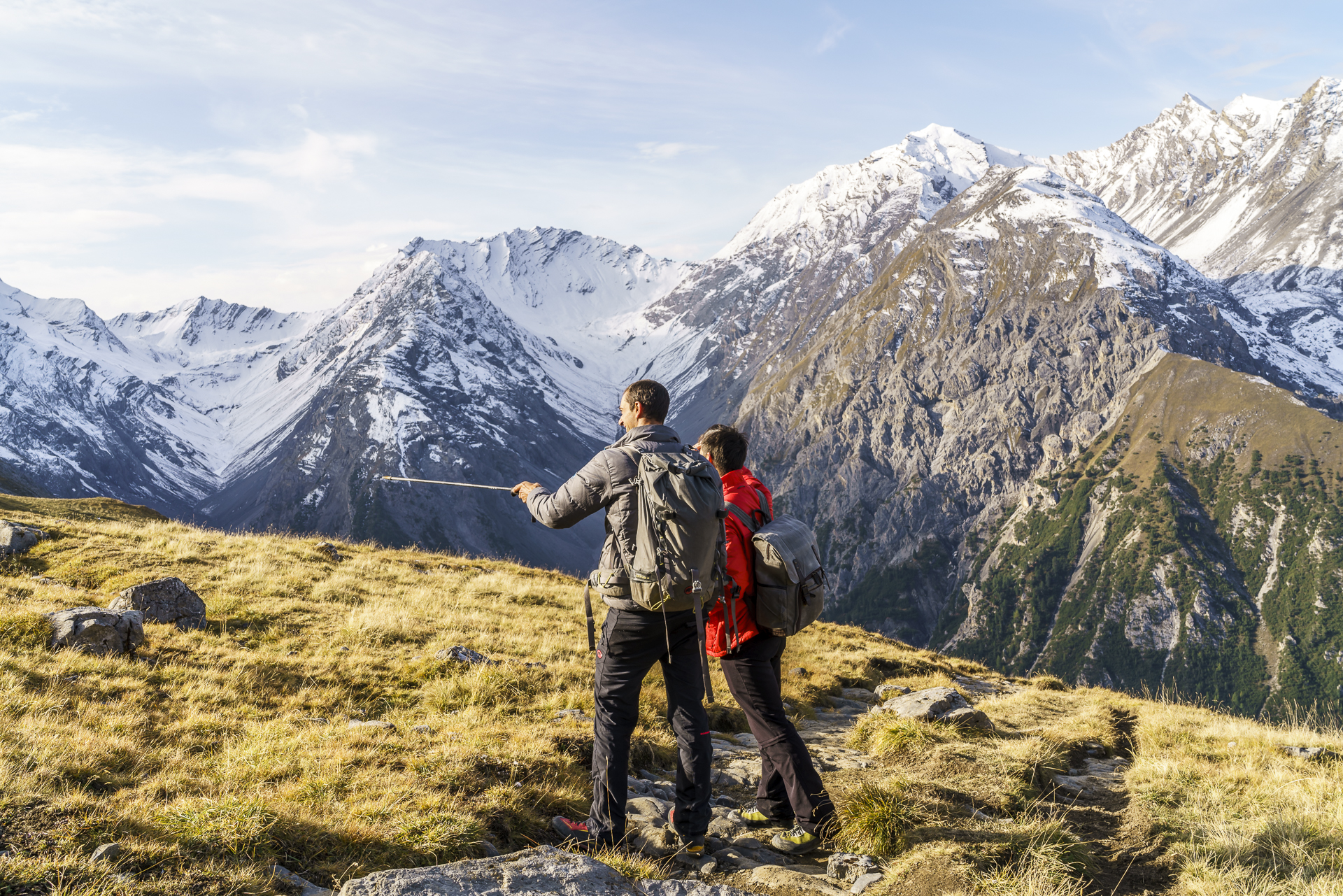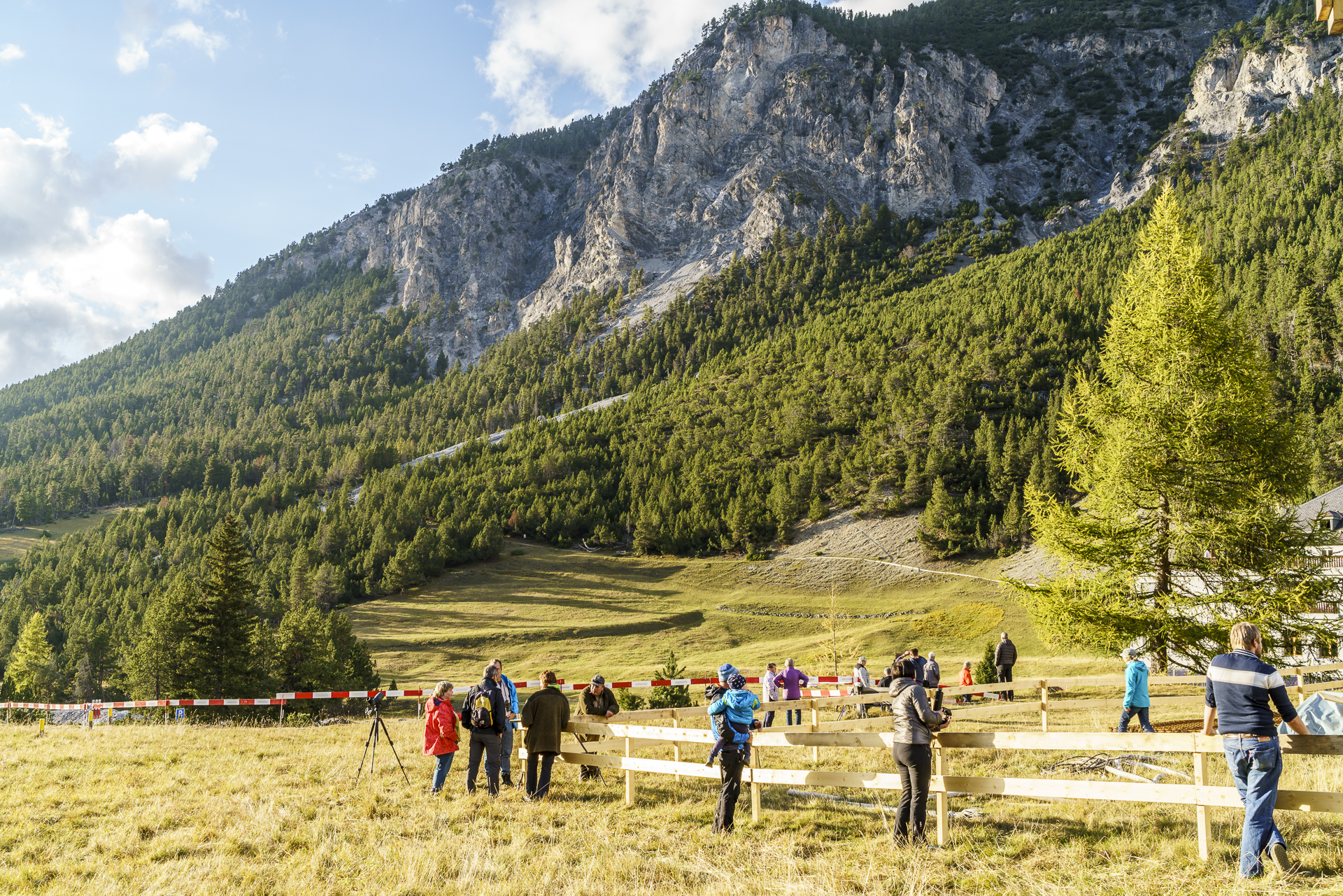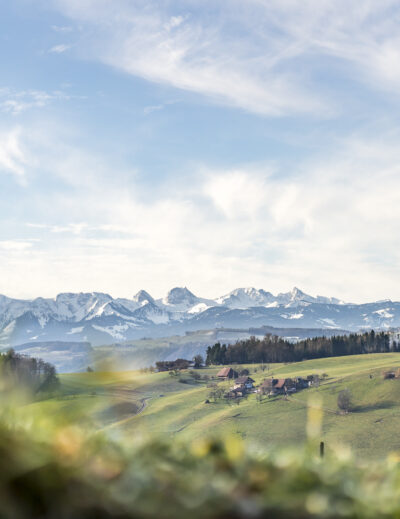
Zernez – Val Cluozza – Chafuol: Swiss National Park Hut Tour
Advertising—this article was created in cooperation with GraubündenParcs
A quarter of the canton of Graubünden’s area is part of a park landscape, ranging from regional nature parks to biosphere reserves and the Swiss National Park. It’s a paradise for those who, like us, deeply appreciate nature. After exploring and reporting on the Beverin Nature Park in collaboration with Graubünden Parcs in July, we headed to the National Park and then to the Biosfera Val Müstair at the end of September.
Visit of the National Park Centre in Zernez
In 2014, the Swiss National Park celebrated its 100th anniversary. Today, it covers a wilderness area of 170 square kilometers, mostly consisting of contiguous and almost untouched land. One of my first hut tours took me to the Swiss National Park when I was barely ten years old. In 2015, we undertook another (quite rainy) tour to the Lais da Macun—a National Park exclave above Zernez. This time, we started our hike at the National Park Center, a simple cubic structure that contrasts with the nearby Schloss Wildenberg, where the National Park staff offices are located. The clean lines, designed by the Graubünden architect Valerio Olgiati, are carried consistently throughout the building—so much so that the entrance has the same dimensions as the windows, and with a room height of 1.95 meters, it gives you the feeling of entering a cave. Once inside, the exhibition, with its large-scale film installations and plenty of “hands-on” materials, immediately captivates me. It’s the perfect introduction for anyone wanting to learn about the flora and fauna of the National Park beforehand
Ascent to Chamanna Cluozza and entering the Swiss National Park
After an entertaining tour of the National Park Centre, park ranger Claudio Irniger awaits us outside. The area of responsibility of the 8 park rangers (there were no women before, as Claudio tells me later) is broad. This includes the maintenance of the hiking trail network, the supervision and support of research work. The bright sunshine and the fresh autumn air are the perfect combination for our tour to the heart of the Swiss National Park – the Val Cluozza. The hard-to-access, wild valley landscape was made to be declared a protected area in 1914. It couldn’t be farmed anyway – and so it was easy to convince the municipality of Zernez of the project. The steep rock faces at the partial entrance do not allow an easy entry into the valley and challenge us with a steep ascent on the first kilometer of hiking trail. Claudio walks briskly and I soon start to gasp. It’s a good thing that there are exciting things to discover along the way. Claudio draws our attention to woodpecker tracks on the tree trunks and shows us where the red deer wander through. Far below us we see a bearded vulture gliding through the air, and just before we reach the Chamanna Cluozza, Claudio spots a magnificent red deer on the opposite side of the valley. Due to the cold September, numerous deer have already retreated to lower valley locations. Nevertheless, we hope to be able to listen to the seasonal deer rutting concert at the Chamanna Cluozza.
In this picture, Hirsch is hiding – this is the result of “only” being equipped with a 90mm lens;)
Deer stalking in Val Cluozza
The Chamanna Cluozza is the only hut in the park where you can spend the night. Surprisingly, we are greeted in the broadest Bernese German – the hut warden couple Marlies and Jürg Martig come from the Bernese Oberland. We move into our simple but very comfortable double room “Füchsli” with bunk bed and then sit down with the other hut guests on the terrace. Most of them have binoculars, telescopes or a zoom lens at hand and pepper Claudio with questions. “What does a parking attendant do all day?” “How many wolves are currently roaming the national park?” “Have you ever run into a bear?” Soon, muffled sounds challenge Claudio’s attention. Excitedly, we search the slopes with the telescope for the roaring deer and watch with fascination what is happening in the thicket.
After the fine night in the hut, we take another look outside and admire the starry night sky.
Via Munter ins Val Spöl
The next morning we start the second stage early and follow the steeply ascending path through the larch and pine forest. The first larch tips are turning yellow – at the beginning of October, everything here will glow golden. The park rangers note such seasonal changes on the basis of defined “indicator plants”. The corresponding larch in Val Cluozza is not quite there yet. This ascent is also entertaining. On the side of the path we see a chamois that does not let itself be disturbed by us. Further up, we pass spherical marmots, which will go into hibernation in the next few days, and at the top of the hill we discover a group of ibex. At the highest point, the panorama opens up to us towards the Münstertal and South Tyrol and on the descent into Val Spöl, I am inclined to compare the scenery with Canada. The fact that I have the potential to become a park ranger becomes apparent a few minutes later when I sniff the typical scent of the red deer. I would still have to train the fitness required for the activity (on average, a parking attendant covers 10 kilometers per day on foot). In order to meet the requirements profile, I would also need basic technical training. And then there’s a little bit of luck: parking attendants stay true to their job for a long time. Chief parking attendant Alfons à Porta has been in office since 1987. In addition to the smell that reminds me of a billy goat, pine trunks also show clear traces of red deer. But it remains a matter of conjecture – we don’t sift through anything on the descent.
Detour to Il Fuorn
Later we take the post bus to Il Fuorn. Opposite the Hotel Parc Naziunal, red deer enthusiasts have already taken up position. In addition to the Val Cluozza and the Val Trupchun, the chances of observing the hustle and bustle of the rutting deer from a distance are also high.
Practical information for the tour to Val Cluozza
The hike Zernez – Chamanna Cluozza – Chafuol can be done either as a day trip or – as we did – with an overnight stay in the Chamanna Cluozza. The total distance is 14 kilometres with an ascent of 1,250 metres and a descent of 1,500 metres. A running time of seven hours should be planned for the entire route. With a stopover, it’s three to four hours a day. The hike is part of the National Park Panorama Trail, which leads in 9 stages and 150 kilometres through the scenic diversity of the national park region. Our tour can be started directly at the Zernez train station – alternatively you can reach the National Park House by post bus (first stop after the train station). From Vallun Chafuol there is an hourly post bus connection back to Zernez (or towards Il Fuorn). If you like it more challenging, you can hike from the Chamanna Cluozza to Val Trupchun (blue and white marked alpine mountain trail). On the website of the Swiss National Park you will find an overview of the hiking routes.
To all those who are looking for a place to stay around Zernez, I can recommend the Hotel Crusch Alba. We stayed there after the 2 day tour. We liked the simple rooms and the Arvenstübli.































Leave a Reply